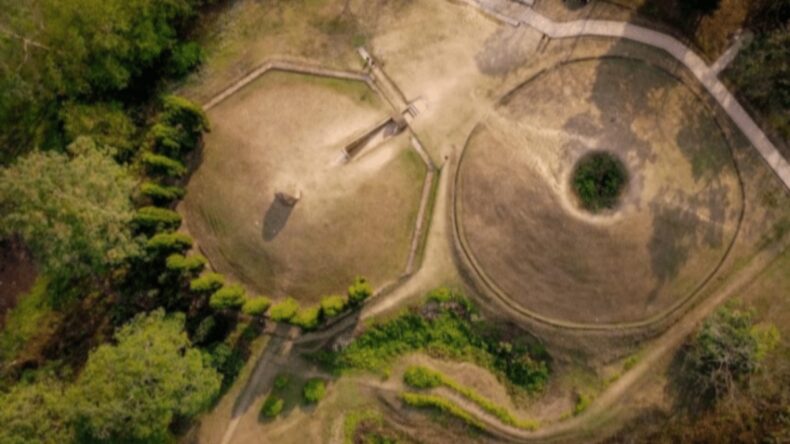Assam’s Charaideo Maidams, the ancient burial site of Ahom rulers, has been nominated by the center for UNESCO World Heritage Site status for the year 2024. It is considered the Ahom equivalent of the ancient Egyptian pyramids.

Highlights
Interestingly, if selected, it would be the first World Heritage Site under the category of cultural heritage in the northeast of India. The Assam Chief Minister, Mr Himanata Biswa Sarma, on Saturday said, “there is currently no World Heritage Site in the category of cultural heritage in the northeast. “The dossier [to push for the case of the Charaideo Maidams] was prepared in collaboration with the Archaeological Survey of India.”
The centre nominated the Maidams from among 52 sites across the country, for the race for the UNESCO World Heritage site tag.
Mr. Sarma added, “The nomination of the Charaideo Maidams comes at a time when the country is celebrating the 400th birth anniversary of Lachit Barphukan.” Lachit Barphukan was a legendary general from the Ahom community who fought the Mughals in 1671.
Historical significance

The charaideo maidams represent the late medieval (13th –19th century CE) mound burial tradition of the Tai Ahom community in Assam. The Ahom ruled Assam for about 600 years until the British annexed Assam in 1826. Charaideo is situated, more than 400 km east of Guwahati.It was the first capital of the Ahom dynasty founded by Chao Lung Siu-Ka-Pha in 1253.
Around 386 Maidams or Moidams have been explored so far, and out of the 386 maidams 90 royal burials at Charaideo are the best preserved. These burials are seen as showpieces of the mound burial tradition of the Ahoms. The Charaideo Maidams preserve the mortal remains of the members of the Ahom royalty, who used to be buried with their accoutrements, as they believed in life after death.
However, after the 18th century, the Hindu method of cremation was adopted by Ahom rulers. They began entombing the cremated bones and ashes in a Maidam at Charaideo.
At present, they are jointly protected and managed by the Archaeological Survey of India and the State Department of Archaeology under the Ancient Monuments and Sites Remains Act 1958 and by the Assam Ancient Monuments and Records Act 1959 respectively.
Moidams have been recovered in different parts of Northern Vietnam, Laos, Thailand, Northern Burma, Southern China, and Northeast India, as the Ahom capital shifted south and eastwards – together defining the region where Tai-Ahom culture prevailed. In this entire region, the cluster of Moidams in Choraideo distinguishes itself in scale and concentration, as well as being located in the most sacred land of the Tai-Ahoms.
What is a World Heritage site?
A World Heritage Site is a cultural or natural landmark that has been recognized by the United Nations Educational, Scientific and Cultural Organization (UNESCO). They are deemed worthy of preservation due to their universal value to humanity, in the present and for future generations. They are divided into two categories: natural heritage and cultural heritage.
The United Nations Educational, Scientific, and Cultural Organization (UNESCO) seeks to encourage the identification, protection, and preservation of cultural and natural heritage around the world considered to be of outstanding value to humanity. This is embodied in an international treaty called the Convention concerning the Protection of the World Cultural and Natural Heritage, adopted by UNESCO in 1972.
Other Indian World Heritage sites

At present, there are 40 sites which hold the tag of World Heritage sites – out of these there are thirty-two cultural sites, seven natural sites and one mixed heritage site. Some of the natural heritage sites are Sundarbans National park, Kaziranga National Park and the Western Ghats. Khangchendzonga National Park is the only mixed(natural-cultural)heritage site.
Other than these sites, India also hosts rich intangible heritage sites. Notably, UNESCO inscribed the Durga Puja in Kolkata on the representative List of Humanity’s intangible cultural heritage in 2021.













